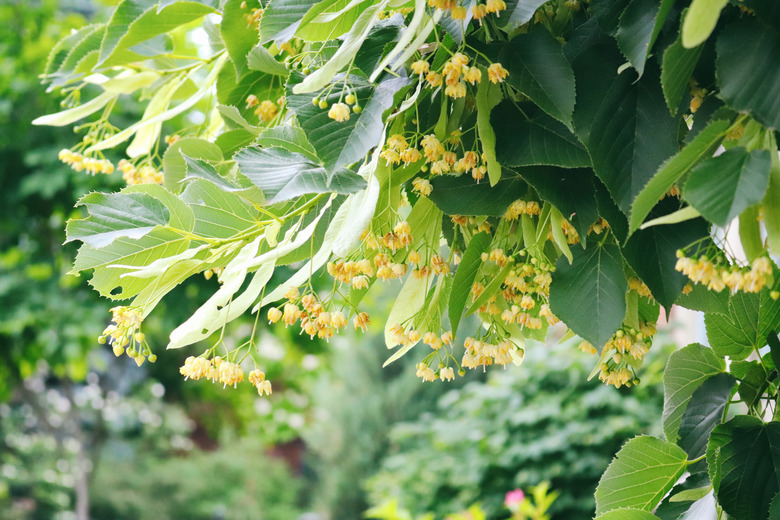How To Troubleshoot A Diseased Linden Tree
Linden trees (Tilia spp.) are a genus of about 30 deciduous flowering trees that grow in temperate regions in North America, Asia and Europe. These trees have a pyramidal or ovate-shaped crown, are often used as ornamental shade trees and can often last for hundreds of years.
Linden trees can be affected by a number of systemic and leaf diseases, some of which are more serious than others. Knowing the symptoms of linden tree diseases can help you decide how to approach them.
Types of Linden Trees
Several varieties of linden trees grow in the United States, including the native American linden (Tilia americana), which grows in central and eastern North America to heights between 50 and 80 feet. The littleleaf linden (Tilia cordata), a species native to Europe, can grow to between 50 and 70 feet. The silver linden (Tilia tometosa) is native to southern Europe and Asia Minor and can grow to heights similar to the littleleaf linden.
Diseases of Linden Trees
Verticillium Wilt
According to the Missouri Botanical Garden, verticillium wilt, a rare but serious disease in linden trees, is caused by fungi and is always fatal.
One of the first symptoms of this disease, according to the Wisconsin Horticulture Division of Extension, is dieback of individual branches. This disease may also cause the leaves on your linden tree to curl—though that may also be caused by aphids or other diseases as well.
Trees infected with verticillium wilt cannot be saved, but their life can be extended with proper watering and fertilization. Verticillium wilt can be spread on your pruning shears and other gardening tools, so it is important to disinfect them with 70 percent alcohol after and before each use.
Nectria Dieback (Nectria cinnabarina)
Other fungal diseases of linden trees, according to the Missouri Botanical Garden, include Nectria dieback, which is caused by the fungus Nectria cinnabarina, which can enter a tree through wounds and cause branches and twigs to die back.
Fruiting structures, which are bumps that may be a creamy white or coral color, often appear on the affected branches.
Canke (Botryosphaeria obtusa)
Canker of linden trees, which may be caused by the fungus Botryosphaeria obtusa, can lead to dead branches in the canopy and black, sunken areas on other branches. Linden tree branches that become infected by canker-causing fungi may not produce leaves.
To control dieback and canker, prune out affected branches. It is best to prune in later winter during a dry spell, as the fungi that cause diseases thrive in moist weather.
Tip
Numerous diseases of the linden tree can be spread to other plants through pruning shears, so be sure to disinfect your shears with 70 percent alcohol before and after each use!
Linden Tree Leaf Diseases
Linden Leaf Blotch
Among the leaf diseases that affect linden trees is a condition known as linden leaf blotch, which, according to the South Dakota State University Extension, can cause premature defoliation. This condition first manifests in late summer as small flecks that get larger with time.
Distinctive features of this disease are the feathery margins of the lesions, which may have a yellowish halo. A severely infected linden tree may lose all its leaves in early fall, says the University of Minnesota Extension.
Remove infected linden tree leaves to prevent the disease from emerging again the following year.
Powdery Mildew
Linden trees can also develop a fungal leaf disease known as powdery mildew, explains the Missouri Botanical Garden. This disease manifests as a powdery white substance on leaves.
While unsightly, powdery mildew does not affect the overall health of the tree. Remove affected foliage as soon as it drops, and do not use infected linden tree leaves as mulch or for compost.
References
- Missouri Botanical Garden: Tilia americana
- Wisconsin Horticulture Division of Extension: Verticillium Wilt of Trees and Shrubs
- Missouri Botanical Garden: Tilia cordata
- University of Minnesota Extension: What's Wrong with My Plant? Basswood/Linden
- South Dakota State University Extension: Leaf Blotches On Trees
- Missouri Botanical Garden: Nectria Canker and Dieback
- The Morton Arboretum: Linden Collection with Pavilion in Summer Explore the Grounds Linden Collection
